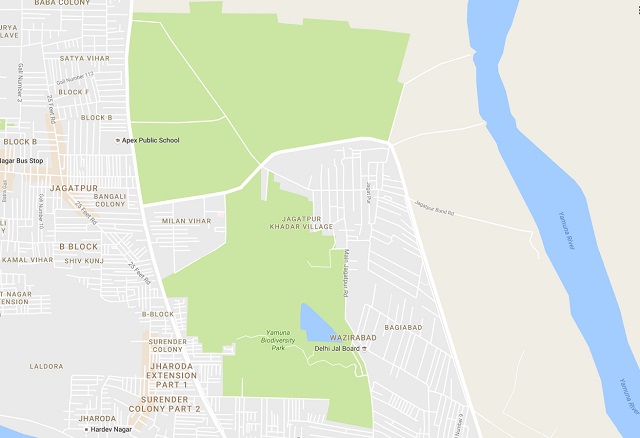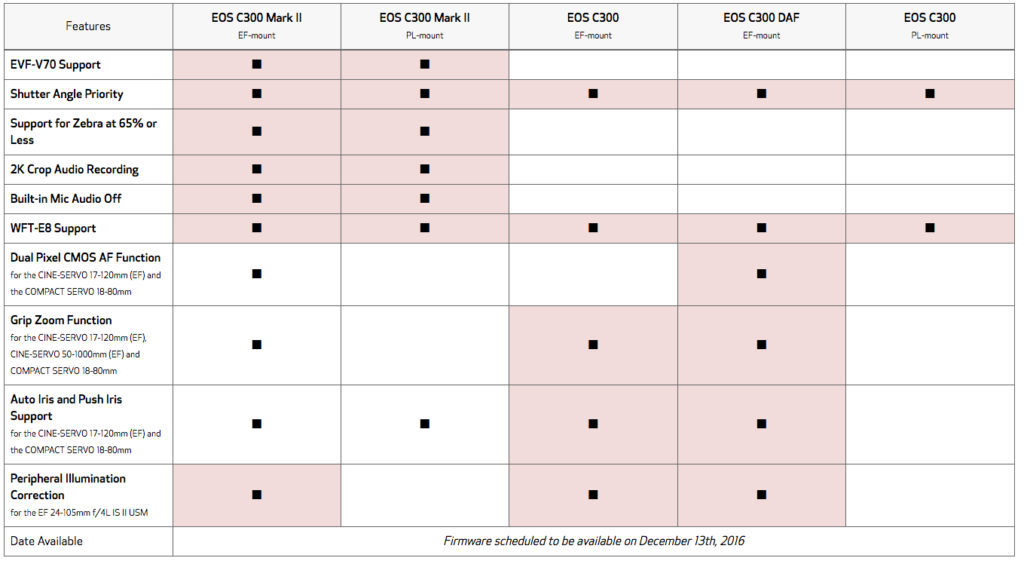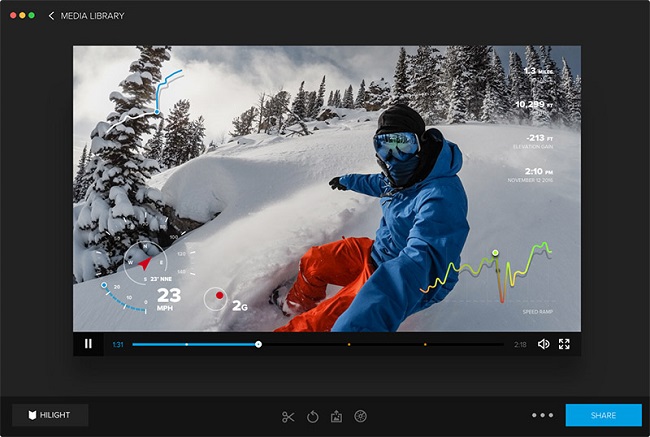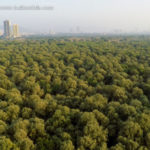IndiaWilds Newsletter Vol. 8 Issue XI
Demonetisation: Environmental Impact

IndiaWilds Newsletter Cover PDF Nov 16
The Union Government declared that Rs. 500 notes and Rs. 1000 notes will not be legal tender from 9th November and would be replaced by fresh notes. The Government order required people to either deposit all the old 500 and 1000 notes in their bank accounts or exchange upto Rs. 4000 per day in banks or post offices.
Indian economy is predominantly cash economy and a major portion of it was in form of Rs. 500 and Rs. 1000 notes. So the number of bank notes to be replaced stands at 1570 crores of 500 rupee notes and 630 crores of 1000 rupee notes. * (Ref: Former Finance Minister Shri Chidambaram’s interview to Rajdeep Sardesai on India Today:-
https://www.youtube.com/watch?v=zGZ_1d595KY ).
This article only examines the Demonetisation exercise from an environment point of view and not the political aspect.
Enormous Scale:
The enormity of the total number of bank notes declared worthless by the Government will sink in if you realise that when places side by side the 500 rupee notes will cover 155.43 square kilometres and the 1000 rupee notes will cover 85.86 square kilometres. Together they will cover 241.2927 square kilometres. This is bigger than the size of Kolkata which has an area of 185 square kilometres and is slightly more than half of Chennai area.

500 Rupee notes places side by side
If you try to place one 1000 rupee note after another in a line along its length, then it can cover a distance of 11,15,100 kms ie Eleven lakhs fifteen thousand and one hundred kilometres. For your information the distance to Moon from Earth is 3,84,400 kms (Three lakhs eighty four thousand four hundred kilometres). So the 1000 rupee notes when placed end to end along its longest side will be 2.9 times the distance to moon.
Similarly, when the 500 rupee notes are placed end to end along its longest side, the length will be 23,55,000 kms (Twenty three lakhs fifty five thousand kilometres). So it will be six times the distance from earth to moon. That means you can hypothetically build a bridge from Earth to Moon which is 6 five hundred rupee notes thick.

500 Rupee notes placed end to end will cover six times the distance between the Earth and Moon
The total weight of 1570 crore 500 rupee notes that have been declared illegal tender will come to 12745.26 tons. Similarly the 630 crore 1000 rupee notes declared illegal will weigh 7512.98625 tons. This totals to about 20258.2463 tons. This weight is calculated based on a 82gsm and 85gsm paper as according to RBI**, the 500 rupee note is printed in 82 gsm paper and the 1000 rupee note in 87.5 gsm paper. GSM in paper quality denotes grams per square meter.
Disposal of this 20,258.2463 tons of old 500 and 1000 rupee notes which have been declared as illegal would be pose a big challenge. Of course, a small percentage of these notes are not expected to be deposited back in the banks or post offices. Nevertheless, even if the unreturned notes will amount to a few tons, still the overall total volume of notes to be destroyed by RBI is extremely high and RBI has never before destroyed such a huge amount of notes.
Special Paper:
According to RBI the “banknotes are printed on a special watermarked paper with substrate cotton and cotton rag”. We have no idea if those contain any harmful chemicals and incineration will release any noxious gases or not. Ofcourse in this era of climate change incineration shouldn’t be the first priority.
Pollution due to destruction of Old Notes:
No study has ever been undertaken by the RBI to understand its impact, as the amount of notes to be destroyed were never so huge. If the notes go into landfills, the chemicals used in the notes will leach into the soil and pollute the area and its ground water. The exact amount of impact cannot be quantified or estimated by us as RBI’s note printing process and the ink used is by and large secret.
Since the volume is so huge, I guess RBI would be already engaged in destroying the notes. So the National Green Tribunal should take notice and ensure that this #DeMonetisation doesn’t turn out to be a surgical strike on India’s environment.
How many trees will be cut for replacing these notes?
Here we are making an assumption that the Government will print the same number of 500 notes (1570 crores) and the number of 2000 rupee notes will be half that of previous 1000 rupee notes (315 crores)
The new 2000 rupee notes are smaller than the 1000 rupee notes and their size is 66mm by 166mm. So the total weight of the 315 crore 2000 rupee notes will come to around 3019.74 tons.
An estimate provided by a global printing company suggests that at least 20 trees between the age of 20-50 years would provide 1000kgs of paper. There are other estimates which suggests 24 mature trees would provide 1000 kgs of paper. Also, since RBI uses “substrate cotton and cotton rag” in the notes and there is no indication about its percentage, we haven’t taken it into calculation. Therefore, in this estimation we will go by the lower figure, so that critics don’t accuse us of a bias against demonetisation.
So using this rule of thumb, of 20 adult trees providing 1000 kgs of paper, the total number of trees needed to be cut to print 1570 crore 500 rupee notes will be 254905. Similarly, the total number of trees needed to be cut for printing 315 crore 2000 rupee notes will be 60394.
So atleast a total of 3,15,300 (three lakh fifteen thousand three hundred) trees need to be cut to get the paper for printing the new currencies.
Cutting three lakh plus trees means wiping out a big forest. That is the environmental impact of printing those many new notes due to Mr. Modi’s sudden decision to make the 500 and 1000 rupee notes illegal.
Trees help in carbon sequestration. They take up the atmospheric carbon dioxide and fix it using the chlorophyll in their leaves and release oxygen to the atmosphere. Trees also help in releasing moisture and help in rainfall. Trees help in binding the soil and protect it from being eroded by wind and rain. Trees also serve as micro-habitat for a lot of species. When such a huge number of trees are going to give way for conversion into paper, it would have a big impact.
Lets think about the enormity of this impact again. In the previous month, we had protested against the proposed cutting of 800+ trees in Bengaluru for the Steel bridge protest. Read (http://www.indiawilds.com/diary/indiawilds-newsletter-vol-8-issue-x/ ) More than 5000 people had lined up for a silent protest. However, this move to declare notes will lead to 3,15,300 trees cut off from unnamed places/plantations and hence there would be no local protests. As we grapple with the severe shortage of notes due to Government placing withdrawal limits on our own money in the banks, the environment is getting devastated.
In India every project whether for a private company or for a public utility and even for defense, there is a discussion about its environmental impact. Unfortunately, in this move where even the Central Government cabinet appears to be merely informed and not consulted, environment is a minor irritation. Nevertheless, when every private and public corporation or utility is expected to plant trees for compensating the loss of trees, RBI should also take up the responsibility of planting trees to compensate for this loss.
Some cynics may say that the paper for printing notes may be imported, so RBI would have destroyed trees in foreign country and not in India. It may be partially true. In 2015, out of the 1500 crore pieces of currency printed 1200 crores were imported and the rest 20% was from India. In fact, the Prime Minister Mr. Modi on April 2015 while speaking on a conclave to mark the 80th year of RBI, announced that “Gandhi fought for Swadeshi and we are printing his picture on the currency notes with imported paper and imported ink…Can we not fix a date… that on any specific date, whatever currency is being printed, the paper will be Indian and the ink will also be Indian…Make in India should start from here. I believe we can do this.“
At the moment we are not sure as to the exact quantum of paper for printing notes have been procured from within India. Nevertheless, even if RBI – despite the PM’s exhortation – continues with procuring only 20% printing paper from India, then, the number of trees that will need to be felled will be sixty three thousand sixty (63060) trees. That is a massive number in itself. Will the RBI Stand up to its responsibility? Will the National Green Tribunal wake up to this?
Way Forward:
With a burgeoning population which some estimates suggest to have crossed 1.3 billion, the printing of notes will continue, as India is a predominantly cash economy. Nevertheless, moving into digital economy with e-wallets will be beneficial in many sectors apart from the huge demand on paper for currency printing. However, it will take time and the Government will have to take the step to popularise the UPI (Unified Payments Interface) which has been launched in December 2015, and has some 17 banks connected and one can directly transfer money to any one using the UPI app. The Government has to also move in and see that this UPI app becomes more popular and used in every utility payment including the toll booths.
To sum up, Modi ji’s decision to replace all the 500 and 1000 rupee notes will lead to a massive impact on the environment as a maximum of 20,258.2463 tons of old notes need to be disposed off and the demand for printing of new notes to replace the old can lead to cutting of 3,15,300 (three lakh fifteen thousand three hundred) trees. We urge that the disposal of such huge amount of notes be done under the guidance of an expert group nominated by National Green Tribunal and immediate compensatory afforestation is carried out by RBI or its affiliated agency and the public be informed about it.
Ref **: https://www.rbi.org.in/upload/content/pdfs/62916.pdf
Deadly Delhi Smog & Agricultural Policy
Those who ignore history are condemned to repeat it.
We are not even talking about history dating back to hundreds of years. We just want the politicians to look back a year or two to realise that the pollution situation in winter in Delhi is not only a recurring phenomena but also becoming more deadlier than ever before. To read more check the below link:
Conservation News
Baba Ramdev’s Park turns Killer trap for Elephant:
Baba Ramdev’s Patanjali Herbal and Mega Food Park which was given 150 acres of land in Baliapara near Tezpur by Assam Government has caused death of a wild elephant.
Assam Chief Minister Shri Sarbananda Sonowal had laid the foundation stone for the project on 6th of November and soon it has come into news for all the wrong reasons. Baba Ramdev’s company had dug 12 large pits which were about nine feet deep for construction in the site. A herd of elephants while passing through it didn’t realise that the pits have been dug up and got snared in it. First a calf felt into the pit and then a female elephant fell into it. The female elephant got severe head injury and fractured its leg as an adult male elephant fell on top of the female elephant. The male elephant could come out. However, the female elephant succumbed to its injuries on 24th November.
This area has not been declared as elephant corridor. Unlike conventional wisdom, only a small part of the elephant’s habitat are notified as reserve forests or National Parks. Increasingly elephants come in contact with human beings as we have been reclaiming land for our use. Whenever there is contact with such large animals, the result has been to the detriment of the elephants.
The local congress spokesperson has said that in view of the elephant activity, the previous congress Government hadn’t allotted this Government land to anyone. We couldn’t independently verify the veracity of this claim.
In this case, an FIR has been launched against the coordinator constructing the food park for Patanjali. However, locals say that given Baba Ramdev’s good equations with the BJP, this issue will quietly die down in a few days.
GM Mustard Likely to be allowed in India
India’s Minister for Environment, Forests and Climate Change Shri Anil Madhav Dave in a written reply to the Lok Sabha has given a very clear signal about his intentions to introduce Genetically Modified Mustard in India.
The Minister has asserted that all concerns expressed by the public about the safety of GM Mustard has been adequately addressed. “Genetic Engineering Appraisal Committee (GEAC) and its sub-committees involve representatives of National Institute of Nutrition (NIN), Bio-Medical Group of Bhabha Atomic Research Centre (BARC), Ministry of Health and Indian Council of Medical Research (ICMR). All the members of GEAC and its sub-committees have been regularly and actively involved at several stages in the assessment of food safety of GM mustard.”
He said that the GEAC had provided opportunities for people to raise their concerns. “The AFES document prepared by sub committee on GM Mustard was placed on the website of the Ministry for a period of 30 days from September 5 to October 5 for inviting public comments from stakeholders.”
“Entire dossier submitted by CGMCP was also made available for review by public during consultation period. A total of 759 comments have been received from various stakeholders and 29 people in person reviewed the dossier”.
With the powerful GM lobby now pretty sure of winning the battle for GM Mustard, the floodgates for Genetically modified vegetables are not far behind.
Environment Ministry Constitutes Four-Member Team for Conservation of Loktak Lake
The Ministry of Environment, Forest and Climate Change (MoEF&CC) has constituted a four-member team for conservation and management of Loktak Lake in Manipur. The four member team visited Loktak Lake from November 7 to November 9 and held discussions with various stakeholders, includig the State Government, concerned agencies NGOs and activists. The team also consulted with people who are living in the vicinity of the lake.
The terms of reference of the team that will visit Loktak Lake are:
(a) To review the implementation of works carried out with financial assistance provided by the Central and State governments so far for the conservation and management of Loktak Lake and suggest further interventions required for conserving the lake in a holistic manner.
(b) Enumerate the steps required to be initiated for declaring Loktak Lake as a UNESCO World Heritage Site.
(c) Identify the steps and actions to be taken to increase the tourism potential of Loktak Lake.
Sundarbans to get respite from Loud Music
The National Green Tribunal (NGT) has noticed the trend of people playing loud music through loud speakers in motor boats and launches in Sundarbans. Marriage parties and also for tourists employ DJs to play loud music by anchoring the motor launch and boats inside Sundarbans and these parties often go on pretty late in the night. Most often they don’t park at one particular place but keep moving, so it becomes difficult to notice and nab them.
“This is the tourist season and the authorities will have to take all steps to ensure that their entry into the Sunderbans does not adversely effect the ecology and environment”. This order was delivered by the bench comprising Justice S P Wangdi and Prof P C Mishra.
The NGT bench is also reportedly upset with the State Government because the Chief Secretary of West Bengal has not yet submitted a report on the health of Sundarbans.
Sunderbans is reported to have 173 hotels and lodges and West Bengal Pollution Control Board officials have been asked to visit those and check about the dates of establishment, whether they have any licence and consent to operate and applicability of other regulatory conditions and report back to the NGT.
Sundarbans is a fragile ecosystem. Use of Styrofoam plates and plastics and dumping them into the waters is resulting in pollution the creeks and waters and the scale of pollution is increasing with each passing day. Given the burgeoning population in the Sundarbans, the impact of pollution by people is becoming noticeable. Unless people become aware and careful and the officials take up their duties seriously, Sundarbans will continue to suffer at the hand of man.
Heavy Metal in Hyderabad Fish
A study by Dr Sreenivasa Rao National Institute of Nutrition, ICMR (Proximate Composition and Determination of Heavy Metal Content in Indian Fish using ICP-MS after Closed Vessel Micro Wave Digestion) has investigated the heavy metal content in fresh water fish from outlets in Hyderabad and Secunderabad.
The study found that the Heavy metal content in fresh water fish were from 52-680 µg/kg for Nickel in Rastrelliger kanagurta and Stromateus sinensis, 38-690 µg/kg for Arsenic in Rastrelliger kanagurta and Pompus argenteus, 3-62 µg/kg for Cadmium in Masto symbollon and Pompus argenteus and 27-108 µg/kg for Lead in Panaeus monodon and Rastrelliger kanagurta respectively. The heavy metal content of fresh water fish varieties was investigated using Inductively Coupled Plasma Mass Spectrophotometer (MD-ICP-MS) after microwave digestion.
The results were in accordance with recommended human daily intake values except for arsenic, which were in agreement with WHO/FAO recommended values and indicates the health of the aquatic ecosystems from where these fish were procured to be within normal limits.
It would be pertinent to mention that a 2004 study titled Fractionation Studies and Bioaccumulation of Sediment-Bound Heavy Metals in Kolleru Lake by Edible Fish (K. Chandra Sekhar et al. / Environment International 29 (2003) 1001–1008) conducted on fish sourced from Kolleru lake in Andhra Pradesh had found that the metal concentrations were greater than the background concentrations of sediments which indicated the anthropogenic origin of metals. Good recovery values were obtained for metal contents in sediments and fish. The authors noted “Large fractions of Zn, Cd and Cu were associated with mobile fraction of sediment and showed greater bio accumulation in fish whereas Ni and Co were least mobilisable. The results clearly indicate that the fish of Kolleru lake are contaminated with metals and not advisable for human consumption”.
So it would be important to periodically find out the heavy metal content in the fish obtained from various ponds, rivers and other wetlands so that the health of various aquatic ecosystems are known and tracked.
Leopard in Yamuna Bio-Diversity Park
A leopard has appeared in Yamuna Bio-Diversity Park in the National Capital Region. The leopard appears to be a grown up male and has made this 457 acre park its home.

Yamuna bio Diversity park
The Yamuna Biodiversity Park was earlier established near the Wazirabad village to restore some of the lost native vegetation of the area. Leopards are known to survive in areas close to human habitations. So this leopard may have wandered into the Yamuna Bio-Diversity Park and found it suitable habitat. That is a heartening sign because if you create a large enough green area and leave it wild, nature will take its course to repopulate it. Ofcourse, there has to be some wildlife in the nearby areas and contiguity or atleast a broken corridor for wildlife to come from.
Unfortunately, these days people panic when they sight a leopard and soon a mob forms to hunt the leopard. The forest department is now considering shifting the leopard from this habitat to Delhi zoo. Just because of fear of being killed, a leopard is going to lose its independence. More number of officials can be placed in the area and the people in the surrounding villages need to be educated to calm their fears and also to adopt certain dos and don’ts for peaceful coexistence with these charismatic megafauna.
COP 22 Concluded at Marrakech
Overall Outcome hailed as forward movement for Climate Action
The main focus of COP22, which was held at Marrakech between 7th to 18th November, was to develop the rules for operationalization of the Paris Agreement which was signed last year and for doing advance work on Pre-2020 actions.
In these discussions, India was led by its Minister of State for MoEF&CC (Independent Charge) Mr. Anil Madhav Dave. and
India Worked with Developing Nations to Ensure that Climate Actions are based on Equity and Common but Differentiated Resposibilities (CBDR) and Climate Justice. The Paris Agreement has clearly recognised the principle of differentiation between developed and developing countries and the current ground was focused on operationalizing it in rules pertaining to Adaptation, Mitigation, Finance, Technology transfer, capacity-building and transparency frameworks.
The “Marrakech Action Proclamation for our climate and sustainable development” captured the sense of urgency to take action on climate change, while ensuring sustainable development. It initiated work on Adaptation Fund to serve the Paris Agreement. The Pre-2020 action, including mobilization of $ 100 billion per year and other support to developing countries was a key element of the Proclamation.
Overall, the outcomes represent a forward movement in the climate actions, especially on the implementation front. Procedural discussions and decisions to develop the Rule Book for Paris Agreement were advanced in many ways at this conference. It was agreed that submissions from Parties will be invited and technical workshops will be held to develop clarity and understanding on these issues.
India participated in the Facilitative Dialogue on Pre-2020 actions and highlighted various time-bound actions that can be taken to bridge the emission gap and provide accelerated support to developing countries.
Equipment Discussions
DJI Inspire 2
DJI has announced their Insipre 2 model of quadcopter for aerial filming. This quadcopter has got a special image processing system that now records 5.2K in CinemaDNG RAW as well as Apple ProRes helping in capture way more details than was possible earlier and allowing for a much higher degree of post-processing.
The DJI Inspire 2 can fly at a maximum speed of 108 kmph. For filming one needs the copter to fly slowly. However, the maximum speed as well as the ability to accelerate from 0 to 80 kilometers per hour in 4 seconds can help the pilot to position the copter at the starting point much faster. The Inspire 2 can also descend at the rate of 9 meters/second which is pretty fast.
The DJI Inspire 2 has got dual batteries. It can fly for 27 minutes.

Inspire 2
It has obstacle avoidance technology as well as sensor redundancy. So if one sensor fails, then the other extra sensor takes over and it doesn’t affect the stability of the copter. This makes if safer. DJI says that the forward and downward vision systems enable the Inspire 2 to detect obstacles up to 30 meters ahead, which allows for protected flight at up to 34mph (54kph) at a controllable attitude angle of 25°. The Forward and downward vision systems allow the Inspire 2 to create a real-time map of its flight route as it flies. If the video transmission system signal is lost and Smart Return Home is enabled, it is able to fly home along its original route, and change to a straight line when it regains a signal. As it returns, it will use the primary camera to identify obstacles as far as 200m in front, allowing it to plan a safe route home. It is also able to reconnect more quickly after losing connection.
The Upward facing infrared sensors scan obstacles 16ft (5m) above, adding protection when flying in enclosed spaces as well as hovering in indoors. Obstacle sensing systems are active during normal flight, RTH and all Intelligent Flight Modes.
For colder climates, Inspire 2 has self-heating technology
The Inspire 2 has DJI’s Lightbridge technology. In this version it transmits from upto a distance of 4.3 miles or 6.8 kms in ideal conditions. It can send 1080p/720p video as well as the FPV view to pilot and camera operator. Users can also switch between 2.4 GHz and 5.8 GHz control frequencies to avoid interference for greater signal stability.
Master and Slave setups are also supported. The master controller can transmit an HD video signal to the slave controller up to 300′ away without image quality loss.
Broadcasters can also directly start broadcasting from the Inspire 2 in 1080 @50i and 720@60p.
The weight of the Inspire 2 is 4kgs. It can fly upto a height of 2500 meters or 8200 feet with the standard propellers. With Hi-Altitude propellers it can even gain a height of 5000 meters or 16400 feet.
The DJI Inspire 2 can be used with two cameras namely Zenmuse X4S and Zenmuse X5S.
The X5S is an interchangeable lens camera and has a Micro Four Thirds Mount. Depending on requirements, one can use different micro-four thirds lenses from 9-45 mm which is equivalent to 18 to 45mm in 35mm terms. This gives a lot of flexibility to shoot aerial imaging. The X5S has a 20.8 Megapixel sensor with a pixel pitch of 3.4 µm. It can shoot at 5.2K resolution at 30 frames per second and 4K at 60 frames per second. DJI claims that this camera has got 12.8 stops of dynamic range. If it is true, then this camera can shoot a lot of contrasty scenes. It comes with an integrated three axis gimbal which gets attached to the Inspire 2.
DJI also has launched a lower version camera called X4S with 8.8 mm lens with f stop of 2.8-11 and 84° angle of view. It has a 20 MP sensor which is of 1” size having pixel size of 2.4 µm. The X4S camera shoots in 5.2K and then converts I to DCI 4K video (4096×2160) at 60 frames per second in H.264 codec and 30fps in H.265. The data rate at which these videos are recorded is 100 Mbps. DJI claims that the X4S has a dynamic range of 11.6 stops. Dynamic range is a highly subjective test and it needs to be seen how true these claims of DJI are.
Price: The DJI Inspire 2 camera costs 2,999 USD.
The X5S camera without lens costs 1,899 USD. The X4S costs 599 USD.
The DJI Premium package costs 5,999 USD.
Go Pro Karma Drone Recall
Go Pro has announced a recall of its just launched Karma Drone. The Karma drone had some instances of power loss in flight and Go Pro has done a complete recall including the attached Go Pro 5 camera and handle.
Go Pro has said that only a small number of its Karma drones have got the power problem. However, it is doing a complete recall.
Karma Drone was priced at 799 usd and had a unique feature of having the Go Pro camera attached which can later be used with a handle as a three axis handheld gimbal.
Go Pro perhaps to counter the negative perception has announced that all buyers who have returned their Karma drone package will get a Go Pro Hero 5 Black camera for free.
The following is the statement issued in their site:
“GoPro is committed to providing our customers with great product experiences. To honor this commitment, we have recalled Karma until we resolve a performance issue related to a loss of power during operation. We plan to resume shipment to Karma once the issue is addressed. The recall was announced after we discovered that in a small number of cases, Karma units lost power during operation. We are investigating the issue and working in close coordination with the U.S. Consumer Product Safety Commission and the Federal Aviation Administration. We are recalling all Karma units and providing a full refund. We are investigating the issue and plan to make the Karma available once it has been resolved. Once your complete refund has been processed and refund issued we will send you a Hero5 Black as a thank you”.
Canon Firmware Update Announcements
Canon has announced a slew of firmware updates for the Canon Cinema C300 and the C300 Mark II cameras as well as for using the new servo zooms.

Canon Firmware Update Announcements
EVF-V70 OLED Electronic Viewfinder Support
This optional EVF-V70 OLED Electronic Viewfinder is now supported by the camera, offering industry-standard operability and quality. The 1920×1080 resolution currently outclasses many competitors, helping to make 4K video production easier.
Shutter Angle Priority
A constant shutter angle can now be maintained, regardless of any other camera settings being changed.
Zebra Range Expanded Below 65%
The range of the Zebra 1 setting has been expanded to between 5% (±5%) and 95% (±5%) in steps of 5%. Previously, the Zebra 1 setting range was between 70% (±5%) and 95% (±5%).
The range of the Zebra 2 setting has been expanded to between 5% and 100% in steps of 5%. Previously, the Zebra 1 setting range was between 70% and 100%.
While higher numbers can help facilitate correct overall scene exposure, helping to prevent over-exposure, the expanded range in the lower end can help correctly expose a variety of skin tones.
2K Crop Audio Recording
Audio can now be recorded when the camera is set in 2K crop mode. Audio must be recorded in the following combinations with a resolution of 2048×1080/1920×1080:
| System Frequency | Frame Rate | S&F Frame Rate |
| 59.94Hz | 59.94P 29.97P 23.98P |
60P 30P 24P |
| 50.00Hz | 50.00P 25.00P |
50P 25P |
| 24.00Hz | 24.00P | 24P |
Built-in Mic Audio Off
The internal microphone on the camera body can now be turned off.
WFT-E8 Wireless File Transmitter Support
The optional WFT-E8 Wireless File Transmitter is now supported, adding wireless operation, metadata input and speedy image transfer from the camera, while offering expanded versatility with an enhanced user interface.
Dual Pixel CMOS AF Function
The camera can now take advantage of the Dual Pixel CMOS AF technology when used with the CINE-SERVO 17-120mm (EF-mount) and COMPACT SERVO 18-80mmm lenses.
Grip Zoom Function
The zoom functions of the CINE-SERVO 17-120mm (EF-mount), CINE-SERVO 50-1000 (EF-mount) and the COMPACT-SERVO 18-80mm lenses can now be controlled directly from the camera’s grip unit.
Auto Iris and Push Iris Support
The Auto Iris and Push Iris functions will now work when the camera is used with the CINE-SERVO 50-1000mm, CINE-SERVO 17-120mm (EF) and COMPACT SERVO 18-80mm lenses. The Auto Iris feature allows the camera to automatically adjust to maintain proper exposure. The Push Iris feature allows the camera operator to temporarily take control and adjust the aperture (f/stop) for an optimal exposure.
Peripheral Illumination Correction
The camera can now collect Peripheral Illumination Correction data when used with the EF24-105mm f/4L IS II USM lens. This allows the camera to automatically adjust the picture to correct for corner shading, helping to maintain consistent brightness across the image area and reduce vignetting.
Go Pro unveils Telemetry feature for Hero5 Black
New Telemetry Feature in Quik for Desktop Unlocks Your HERO5 Black’s GPS
Unlock the data behind your GoPro content with telemetry gauges available today on the Quik for Desktop app. The new telemetry feature adds an immersive layer to your story by providing stats about the action as it unfolds on-screen, from how fast you were speeding down the line on your last mountain run or big wave, to how high you climbed or how many g’s you pulled in your best track turn.

Go-pro Telemetry
GoPro telemetry taps into the GPS capabilities of the Hero5 Black by capturing data about your GPS path, speed, altitude, g-force, elevation gain and more. The results are overlaid as graphics on your videos, making your content more meaningful and providing benchmarks and milestones for your experiences. The overlays are also customizable, allowing you to resize and move the gauges and turn on or off each data graphic.
Here’s a more detailed overview of the telemetry data you’ll see in Quik for Desktop with your GPS-activated HERO5 videos:
Info Cluster: see an overview of real-time stats as you watch your video
- Distance (km or miles)
- Altitude
- Elevation Gain
- Date & time
Speed:
- Speedometer tells you how fast you were going and includes a compass for orientation
- Speed graph displays your speed over time and charts your fastest moments and spikes in activity. Speed graphs also serve as a great tool in the editing and scrubbing process, allowing you to easily identify highlight moments from your footage.
GPS Path: see the route you took and pinpoint your position as you move along the path
G-Force: check out how much g-force you’re pulling against as you accelerate or change direction
Natural History
COUNTRY NOTEBOOK: M. Krishnan: ‘The Painted Stork‘ By Saktipada Panigrahi
http://www.indiawilds.com/forums/showthread.php?8852-Country-notebook-m-krishnan&p=81471#post81471
Prolonged Flood situation in Manas by Samrat Sarkar
Wildlife Photography
Nilgai in Bharatpur by Mrudul Godbole
http://www.indiawilds.com/forums/showthread.php?17821-Nilgai-in-Bharatpur
Asiatic Elephant by Prashobh Ailyam Nair
http://www.indiawilds.com/forums/showthread.php?17829-Asiatic-Elephant
Chakradhara-Meadow by Debasis Bose
http://www.indiawilds.com/forums/showthread.php?17844-Chakradhara-Meadow
Elephant in Bandipur by Jerin Dinesh
http://www.indiawilds.com/forums/showthread.php?17839-A-portrait-try
Prince-of-Bandipur by Ulhas Kalyanpur
http://www.indiawilds.com/forums/showthread.php?17858-Prince-of-Bandipur
Eurasian Wryneck by Sandipan Ghosh
http://www.indiawilds.com/forums/showthread.php?17866-Eurasian-Wryneck
White Rumped Shama male by Subhash Shrivastava
Skink by Prajwal Ullal
http://www.indiawilds.com/forums/showthread.php?17861-quot-Who-s-that-paparazzi!-quot
Bamni Falls by Arun Acharjee
http://www.indiawilds.com/forums/showthread.php?17880-Bamni-Falls
Eriocaulon Carsonii by Dr.Jitendra Katre
http://www.indiawilds.com/forums/showthread.php?17873
I look forward to your inputs and support in preserving the last tracts of wilderness and wildlife left in our beautiful country. For other interesting articles and images check –http://www.indi
To post in the IndiaWilds forums, you can register free of cost using your Full Name as user id at:
http://www.indiawilds.com/forums/register.php
If you are already a member of IndiaWilds and have forgotten your user id and/or password you can mail to:
administrator@indiawilds.com
If you want to contribute original articles, or for any image enquiries please send a mail to:
administrator@indiawilds.com
Regards,
Sabyasachi Patra
Profile | Contact Us | Facebook | Diary | Equipment reviews | Forums | IndiaWilds You Tube Channel
Please post your views and feedback in the comments below.
- Canon Launches Cine Servo 11-55 mm T2.95-3.95 lens - 10 September,2025
- Water Monitor Lizard in Sundarbans - 14 May,2025
- Radio collared Tigress - 30 January,2025












IndiaWilds newsletters are a treasure trove of information. That is some amazing data on demonetisation. Hopefully, with the government’s push towards a cashless society, many trees will be saved in the long run. I quite relished in bits of other news. DJI Inspire 2 is quite the drool stuff. It is an amazing piece of gadgetry having tremendous potentials. How fast the world of imagery mapping changing!
Thanks Umashankar!
Printing of each note takes up precious resources. In an era when climate change has become reality, one should try and avoid actions which can increase it. Hopefully, a significant portion of the economy can move into e-wallet/UPI mode.
The technology on aerial filming is increasing in leaps and bounds. Few years back, I had never imagined myself to be able to get such fantastic aerial shots. Soon there will be personal flying copters as well. 🙂
Cheers,
Sabyasachi
Sabyasachi, this is one impact that no one really thought about. I really do hope that what you have suggested is paid heed to.
Thanks Rachna!
There are lot of actions which have unintended consequences. One man cannot visualise everything unless he is God. Today everybody is grappling with the problem of cash withdrawal from ATMs, so no one is giving a thought to the environment. So I was trying to point out the challenge from environmental perspective. Happy that you liked.
Cheers,
Sabyasachi
IndiaWilds monthly newsletter is an important online magazine in the context of Nature and conservation issues. It has been arising many relevant topics. I feel very proud as a contributor to this magazine.
samrat sarkar